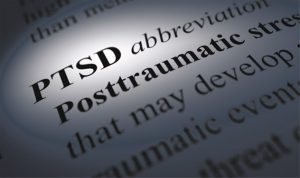By Richard Capiola, MD


Diagnosis of PTSD
Diagnosing PTSD requires a comprehensive evaluation by a mental health professional. The fifth edition of the Diagnostic and Statistical Manual of Mental Disorders (DSM-5) outlines specific criteria for diagnosing PTSD. To receive a diagnosis, an individual must have experienced a traumatic event and subsequently exhibit symptoms such as intrusive thoughts, avoidance of trauma-related triggers, negative mood changes, and hyperarousal.
Healthcare professionals utilize various assessment tools and interviews to gather information and determine the presence and severity of PTSD symptoms. They consider the duration and intensity of symptoms, as well as their impact on daily functioning. Accurate diagnosis is crucial for developing an appropriate treatment plan tailored to the individual’s needs.
Treatment Approaches
The treatment of PTSD often involves a combination of psychotherapy, medication, and self-help strategies. The goal is to alleviate symptoms, improve overall functioning, and enhance the individual’s quality of life. Here are some commonly used treatment approaches for PTSD:
Cognitive Behavioral Therapy (CBT): CBT is a widely recognized therapy for PTSD. It focuses on helping individuals identify and change negative thought patterns and behaviors associated with trauma. Through techniques such as exposure therapy and cognitive restructuring, CBT aims to reduce avoidance and alleviate distressing symptoms.
Eye Movement Desensitization and Reprocessing (EMDR): EMDR is a specialized therapy that utilizes bilateral stimulation to help individuals process traumatic memories. By guiding the person’s eye movements or using other forms of stimulation, EMDR facilitates the reprocessing of traumatic experiences, leading to a reduction in distressing symptoms.
Medication: Certain medications, such as selective serotonin reuptake inhibitors (SSRIs), may be prescribed to manage PTSD symptoms. These medications can help regulate mood, reduce anxiety, and improve sleep patterns. It is essential to consult a psychiatrist to determine the appropriate medication and dosage.
Self-Help Strategies: Individuals with PTSD can benefit from self-help strategies like practicing relaxation techniques, engaging in regular physical exercise, maintaining a healthy lifestyle, and seeking support from friends, family, or support groups. These strategies can enhance coping mechanisms and promote resilience.
PTSD is a complex mental health condition that requires proper diagnosis and effective treatment. Identifying PTSD symptoms early and seeking professional help is crucial for individuals to regain control over their lives. Psychotherapy, medication, and self-help strategies offer valuable tools for managing and alleviating PTSD symptoms. With the right support and interventions, individuals with PTSD can embark on a path of healing, recovery, and improved well-being.
Richard Capiola, MD
239.649.7494
704 Goodlette Frank Road North, Suite 222
Naples, Florida 34102
 Southwest Florida's Health and Wellness Magazine Health and Wellness Articles
Southwest Florida's Health and Wellness Magazine Health and Wellness Articles

